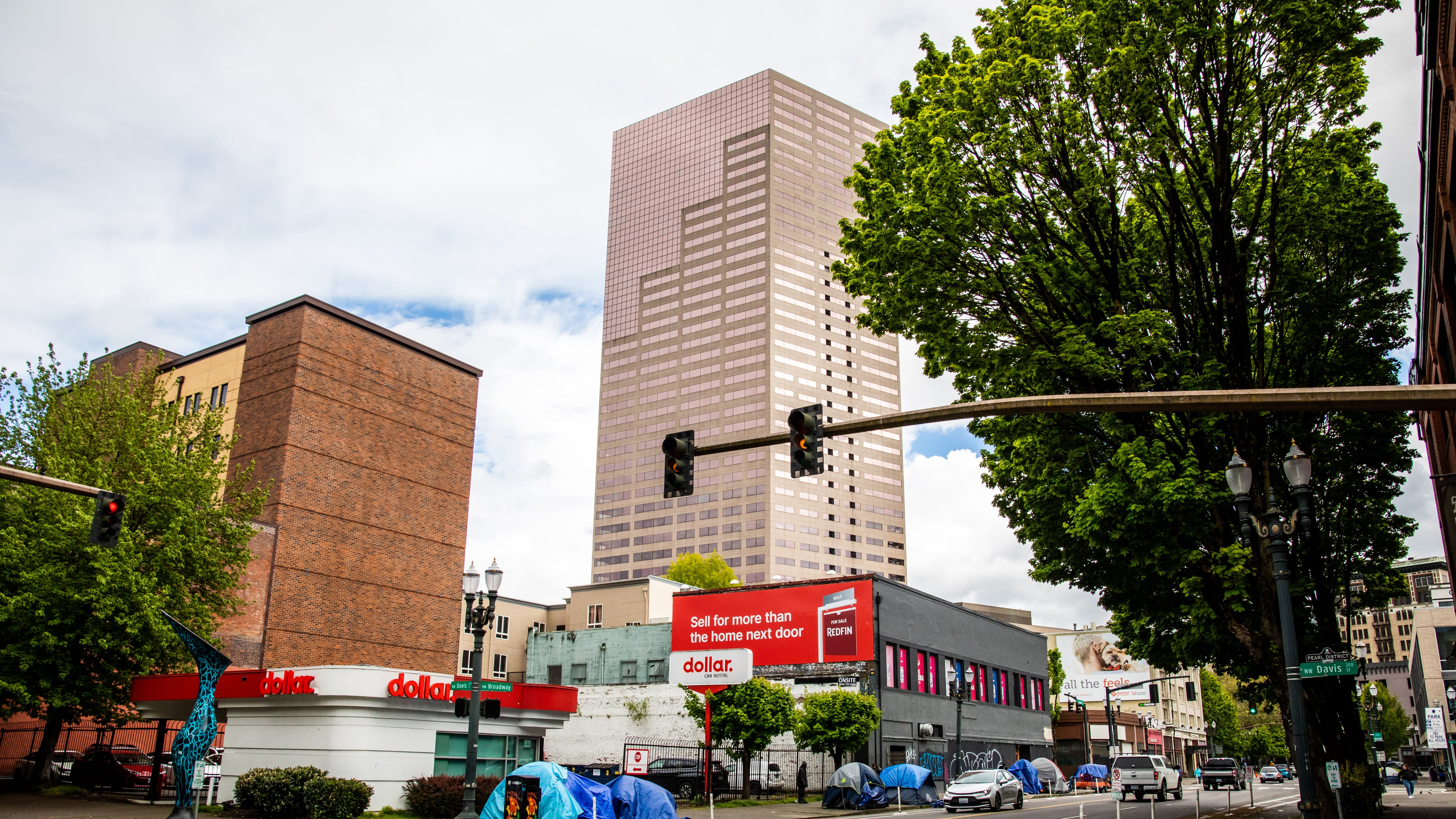BIG PINK BECOMES LIGHTNING ROD: Portland Mayor Keith Wilson on May 20 took exception to The Wall Street Journal making Big Pink the latest symbol of Portland’s decline. The 42-story U.S. Bancorp Tower on Southwest 5th Avenue at West Burnside Street went on sale this week, as first reported by The Oregonian, after hemorrhaging tenants for the past few years. The Journal piled on in Monday’s paper with a story headlined “A Fire Sale of Portland’s Largest Office Tower Shows How Far the City Has Fallen.” The building’s owners, Seattle-based Unico Properties and a unit of Swiss banking giant UBS, are asking $70 million, according to the Journal, 80% less than the owners paid a decade ago. Big Pink’s woes are “a potent symbol of what ails downtown Portland,” the Journal said. The building, where tenants have complained in court papers about fentanyl smoke and human feces in public areas, is “a warning for what can happen to once-bustling downtowns if they get caught in the doom loop of losing business,” the Journal said. In a Tuesday email to constituents, Wilson said the paper had overlooked Portland’s progress. “I wish they’d covered our rapid improvements in public safety, new residents, business opportunities, regional destinations, and creatives,” Wilson wrote. “Instead, they focused on the upcoming sale of ‘Big Pink,’ an iconic part of the Portland skyline, and a business tenant who left over safety and livability concerns.” Wilson went on to use Big Pink for his own ends, urging voters to contact city councilors and tell them what they want in the city’s budget, which goes to a vote this week, with police staffing the primary battleground. Wilson cited a poll, first reported by WW, showing that 69% of Portlanders want the city’s officers per capita to keep up with those in other cities. To do that, the city would have to double the size of its police force. A spokeswoman for Unico declined to comment on the matter.
KOTEK UPS CAMPAIGN ACTIVITY: Although speculation that Gov. Tina Kotek will not run for a second term continues to percolate among her detractors, filings with Oregon’s secretary of state show her reelection campaign is stirring. The campaign has raised more than $200,000 this year and is spending on consultants, including, recently, $10,000 with Winning Mark, the company run by the veteran Democratic political consultant Mark Wiener, who advised Kotek in 2022. Thomas Wheatley, Kotek’s campaign adviser, says she is concentrating on her day job. “In the final weeks of the legislative session, the governor remains entirely focused on tackling the toughest challenges facing our state—making housing more affordable, expanding access to mental health care and improving our schools,” Wheatley says. “As she looks to the future, Gov. Kotek knows that with everything going on in the world today, this moment calls for leaning in, not stepping back.”
MADE IN OLD TOWN SEEKS MORE STATE MONEY: Backers of the proposed shoe manufacturing campus Made in Old Town are asking state lawmakers for more money as they struggle to finance an ambitious plan to jump-start economic development in the gritty urban core. In a series of emails this month between Made in Old Town principal Elias Stahl and the office of Sen. Kate Lieber (D-Portland), Stahl repeatedly asked Lieber to help Made in Old Town secure another $5 million from the state Legislature in the current session, which ends June 29. “While we’re aiming to fill the remaining $5M needed to outfit the buildings to move tenants in and open our doors from private investors, the stigma of Old Town and working with the City of Portland is proving challenging,” Stahl wrote to Lieber’s office on May 9. On May 13, the senator’s office put the kibosh on Stahl’s pleading. Her budget director wrote to Stahl that it would be inappropriate for Lieber to make any funding commitments during an ongoing budget cycle as co-chair of the Joint Ways and Means Committee. Made in Old Town has already received $9 million in public financing. Its principals could not immediately be reached for comment.
VOTE-BY-MAIL FOES PASS MILESTONE: A 2026 ballot initiative that would end Oregon’s first-in-the-nation vote-by-mail system passed a key milestone May 16, when the Oregon Department of Justice published a certified ballot title, following public input on an earlier draft. The certified title “prohibits vote-by-mail elections,” requires “proof of citizenship” for voter registration, and mandates “valid” photo identification to vote. The title is now subject to challenge by anyone who objects to the title’s wording between now and June 2. For measures that are likely to be contested, such as IP 37, that appeal process can be a game of political football as interested parties seek the wording they think will resonate most with voters. “I’m happy with the ballot title,” says Ben Edtl, one of three chief petitioners hoping to end vote by mail. “It’s important to note that our proposed constitutional amendment allows for verified absentee ballots to continue to vote by mail, including military, people with disabilities, and elderly who may not be able to cast their votes in person.”
VOTER TURNOUT LOW IN SPECIAL ELECTION: On the afternoon of election day, May 20, Multnomah County reported voter turnout in the special election at 16.09% for accepted ballots. That’s 87,652 ballots returned of the 573,699 mailed to registered voters in Multnomah County. Tim Scott, director of Multnomah County elections, says average turnout in special elections is anywhere from 15% to 40%, but turnout has been lower during this special election. “Based on our turnout so far, it looks like we’ll probably end up somewhere in the neighborhood of 21% turnout,” he said at noon Tuesday. “But we still have eight hours of voting left today, and it’s possible we could see a last-minute surge that takes turnout higher than our projection.” The turnout this year has been lower than in special elections the previous few years; the May 16, 2023, election, for example, drew a 16.76% turnout the night before election day, with 93,680 voters already having cast their ballots. That election ultimately saw 30.06% turnout. For most county voters, this election’s hot-ticket items were some contested school board races across various districts and, for Portland Public Schools voters, a $1.83 billion bond measure to rebuild three high schools and make repairs across the district’s facilities. Visit wweek.com to read the results.

